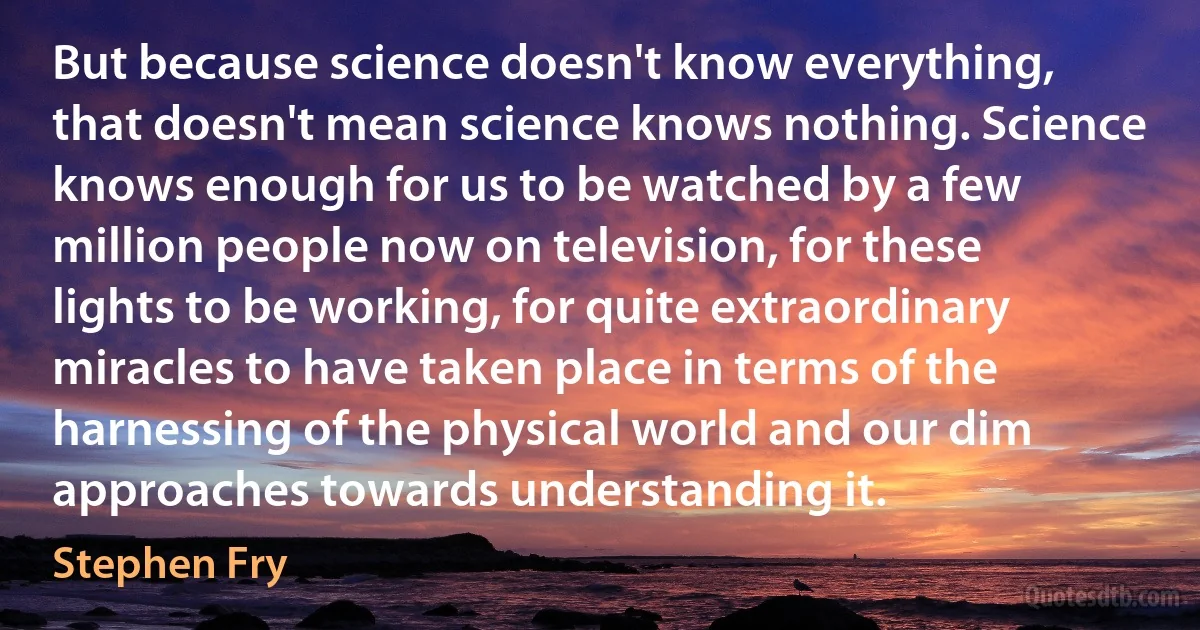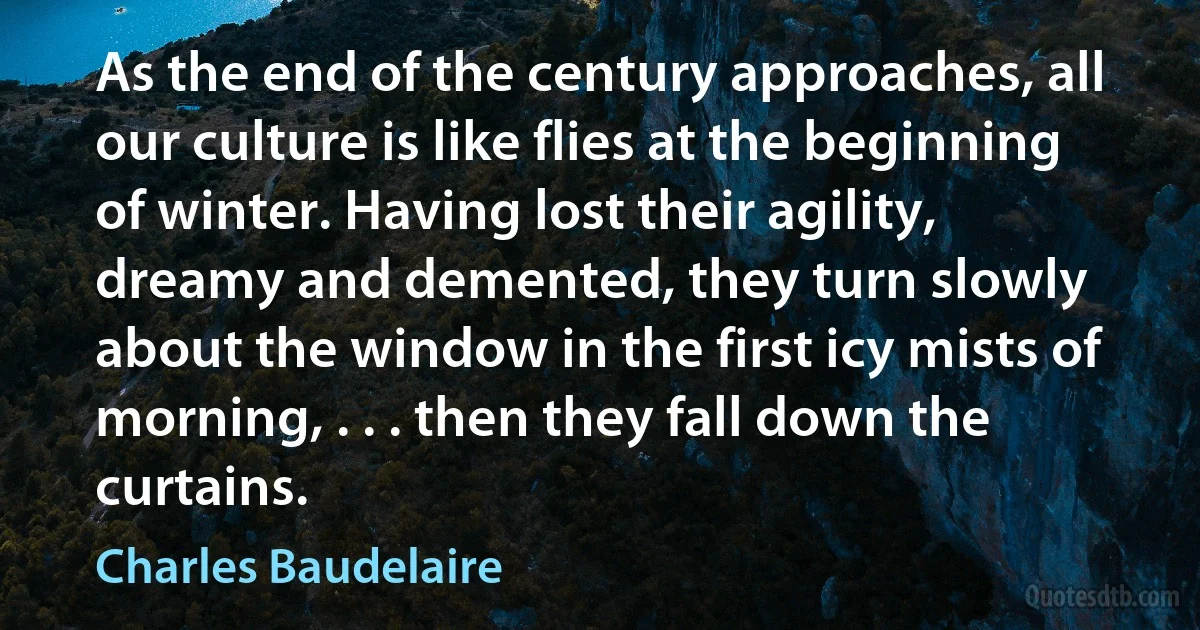Approaches Quotes - page 10
The national Democratic Party and its southern affiliates labored mightily to re-subjugate the newly free blacks, eventually succeeding by implementing Jim Crow laws, motivating the birth of the Klan and then protecting it, establishing separate-but-equal schools and public facilities, and enacting codes of lawful segregation, all of which Democrats defended in a fight to the death until the 1960s. In U. S. history, from the ratification of the Constitution to the economic devastation wrought by Obama on contemporary black Americans, the men and women who run Democratic Party, from Jefferson and Jackson forward, have been the ferocious enemy of black Americans entering the mainstream of American life, to this day bending every tool of political power to keep them angry, unemployed, mired in poverty, and politically and economically dependent in a manner that approaches quite near to re-enslavement.

Michael Scheuer
In some ways. I do want to do something very different with each book...I think this book is linked to the first but approaches it in a completely different way. The first book was much chillier, more remote. And intentionally so. I don't think it was a book that anyone loved and I didn't love it either. It was not a book that was meant to inspire love in the way that I think this one is.

Hanya Yanagihara
From a pessimistic viewpoint, it can be stated that there is no good general way of structuring a system. However, from an optimistic point of view one can say that a number of good ways of structuring systems exist and that some are better than others for any particular system. In this and the following sections, there will be a presentation of a number of structuring approaches that have merit and have been employed successfully, including functional structuring, equipment structuring, and use of various coordinate systems.

Harold Chestnut
Rightness is what matters in vertical thinking. Richness is what matters in lateral thinking. Vertical thinking selects a pathway by excluding other pathways. Lateral thinking does not select but seeks to open up other pathways. With vertical thinking one selects the most promising approach to a problem, the best way of looking at a situation. With lateral thinking one generates as many alternative approaches as one can.

Edward de Bono
[W]e need to shove aside the notions of the Progressives and Lost-Causers, that Reconstruction was some sort of Vichy occupation of a poor, pitiable South, as well as of the Marxists, that Reconstruction could have been the beginning of a socialist America had not the monied interests suppressed it. Neither of these approaches has much sense of the texture of Reconstruction's reality.

Allen C. Guelzo
A new view of the role of art and science in cartography is clearly needed. It is probably a mistake to view maps as objects that contain varied amounts of scientific or artistic content for which we must determine an appropriate balance (as both Keates, 1984, and Robinson, 1952, seem to, with Keates arguing for more art and Robinson for more science). Instead, it makes more sense to consider complementary artistic and scientific approaches to studying and improving maps, both of which can be applied to any given cartographic problem. The artistic approach is intuitive and holistic, achieving improvements through experience supplemented by critical examination (where critical examination implies expert appraisal of the results of our cartographic decision-making efforts). It draws on science in using perspective, understanding of human vision, color theory, and so on.

Alan MacEachren
The open system approach to organizations is contrasted with common-sense approaches, which tend to accept popular names and stereotypes as basic organizational properties and to identify the purpose of an organization in terms of the goals of its founders and leaders.
The open system approach, on the other hand, begins by identifying and mapping the repeated cycles of input, transformation, output, and renewed input which comprise the organizational pattern. This approach to organizations represents the adaptation of work in biology and in the physical sciences by von Bertalanffy and others.

Daniel Katz
[The] Army understands that cultural change is a long term process that requires commitment, diligence and continual evaluation. We recognise that in many ways we are behind the curve when compared to other corporate and public institutions, but we are determined to enact change in a meaningful and enduring way. We are dedicated to drawing on, and implementing, best practice by engaging with leaders who have undertaken successful and innovative programs in this field including Deloitte, the National Rugby League and the Australian Federal Police. Through these relationships we will develop methodologies and approaches to ensure sustainable diversity.

David Morrison



